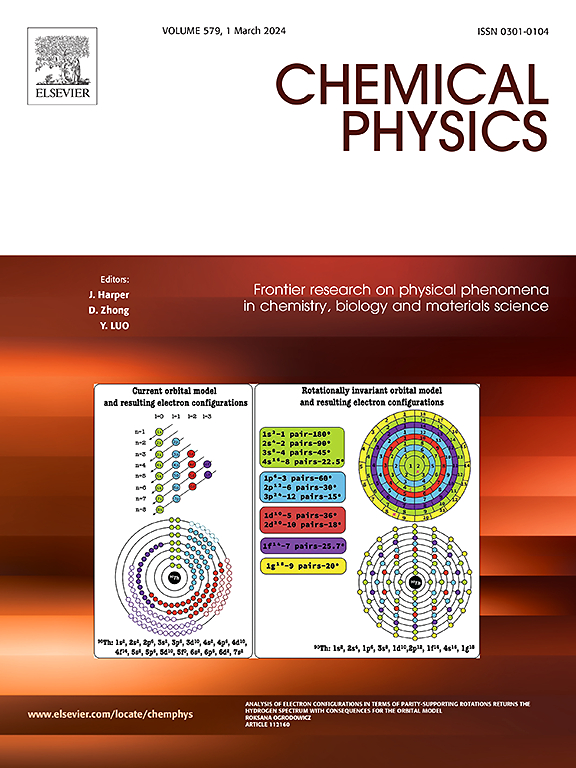微通道中ag-H2O纳米流体的热流体特性:分子动力学研究
IF 2
3区 化学
Q4 CHEMISTRY, PHYSICAL
引用次数: 0
摘要
优化纳米粒子形态是提高微通道系统中纳米流体热性能的一个重要途径,但这一途径尚未得到充分开发。本研究通过分子动力学模拟研究了浓度为 1-5 Vol% 的 Ag-H2O 纳米流体的热物理性质,采用了三种纳米粒子形状(血小板形、圆柱形和球形)。分析了包括径向分布函数、均方位移和温度/密度曲线在内的关键指标,以建立结构-性能关系。结果表明,血小板形纳米颗粒的峰值温度为 327 K,超过了圆柱形(320 K)和球形(315 K),比纯水(299 K)高出 9.4%;扩散系数排序保持不变,证实了纳米颗粒的流动性直接放大了热传输;含有血小板颗粒的纳米流体的原子势能增加了 10.6%,支持了形状诱导的增强。这些发现强调了纳米粒子形状在优化热传递方面的重要作用,推动了高性能热管理系统的发展。本文章由计算机程序翻译,如有差异,请以英文原文为准。

Shape-dependent thermal and fluidic properties of ag-H2O nanofluids in microchannel: A molecular dynamics study
The optimization of nanoparticle morphology represents a critical yet underexplored avenue for enhancing nanofluids thermal performance in microchannel systems. This study investigates the thermophysical properties of Ag-H2O nanofluids at 1–5 vol% concentration using three nanoparticle shapes (platelet, cylindrical, spherical) via molecular dynamics simulations. Key metrics, including radial distribution function, mean square displacement, and temperature/density profiles were analyzed to establish structure-property relationships. Results demonstrate that platelet-shaped nanoparticles achieve a peak temperature of 327 K, exceeding cylindrical (320K) and spherical (315 K) variants, and outperforming pure water (299 K) by 9.4 %; the diffusion coefficient ordering remained the same, confirming that the mobility of nanoparticles directly amplified the heat transport; nanofluids with platelet particles show a 10.6 % increase in atomic potential energy, supporting the shape-induced enhancement. These findings underscore the significant role of nanoparticle shape in optimizing heat transfer, advancing the development of high-performance thermal management systems.
求助全文
通过发布文献求助,成功后即可免费获取论文全文。
去求助
来源期刊

Chemical Physics
化学-物理:原子、分子和化学物理
CiteScore
4.60
自引率
4.30%
发文量
278
审稿时长
39 days
期刊介绍:
Chemical Physics publishes experimental and theoretical papers on all aspects of chemical physics. In this journal, experiments are related to theory, and in turn theoretical papers are related to present or future experiments. Subjects covered include: spectroscopy and molecular structure, interacting systems, relaxation phenomena, biological systems, materials, fundamental problems in molecular reactivity, molecular quantum theory and statistical mechanics. Computational chemistry studies of routine character are not appropriate for this journal.
 求助内容:
求助内容: 应助结果提醒方式:
应助结果提醒方式:


